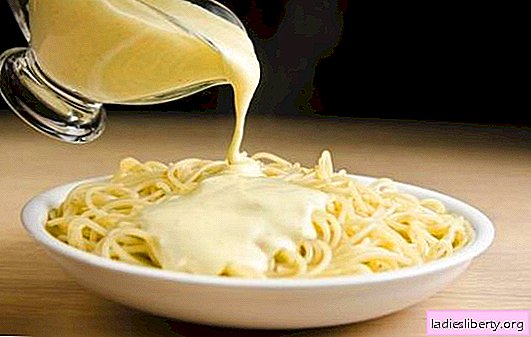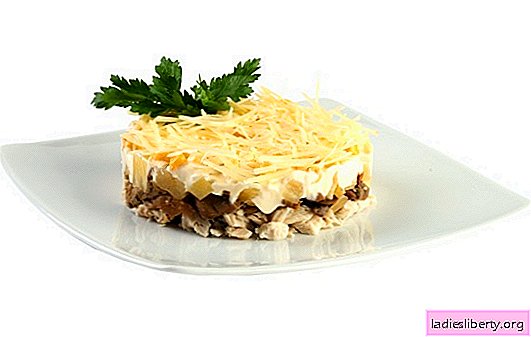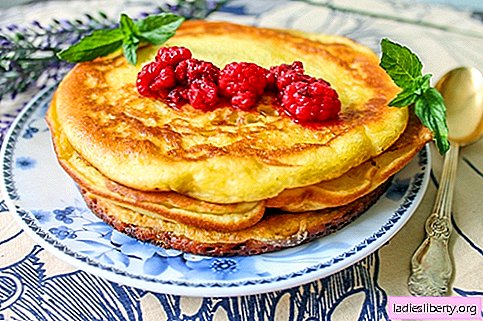
Sea buckthorn - general description
Sea buckthorn - a genus of low shrub plants belonging to the sucker family. The roots of the bushes are deep, forked into many shoots. The branches of sea buckthorn are prickly, the leaves located on them are alternate, whole-linear, like willows. The leaf blade is covered with grayish dots on top and star-shaped scales on the bottom.
Flowers that develop before the leaves are crowded into plain, small inflorescences of the ear, bloom in April. After pollination, spherical fruits ripen - bright orange berries with a pronounced aroma and sour taste. Fruits are formed, usually in the first half of autumn, forming dense brushes.
Sea buckthorn - types and places of growth
In total, in the natural environment, three types of sea buckthorn are known, which are widespread in the countries of Eurasia. Only two of them have cultural and medicinal significance:
1. Buckthorn buckthorn (buckthorn) - photophilous, drought-tolerant shrub lives in the wild mainly in Central Asia, Mongolia, China, the Caucasus. Southern Siberia and almost the entire European part are the Russian ranges of buckthorn buckthorn. It is cultivated for the sake of berries, which are widely used in folk medicine, homeopathy and for the production of oil. Traditional medicine also welcomes her.
2. Sea-buckthorn loosestrife - characterized by yellow fruits, grows whole thickets in the Himalayas, Altai, the North Caucasus, in the Crimea. On the territory of our country is rarely found in the east of the Kaliningrad region and in Eastern Siberia. Loose buckthorn prefers rocky places along streams and river banks. Leaves of this type are used to make aromatic and healthy tea.
Sea buckthorn - healing properties
In the entire northern hemisphere, it is difficult to find a plant that would have such versatile forms of practical application. Sea buckthorn, especially its fruits, is a whole multivitamin complex that has concentrated a huge amount of vitamin C and group B, carotene, folic acid, tannins, riboflavin, etc.
These substances and their properties allow the use of sea buckthorn as an anti-inflammatory, analgesic, wound healing agent. The oil obtained from berries has granulating, antispasmodic and antiseptic effects, and the leaves are used for rheumatism. Sea buckthorn is a great addition to the main therapy against many diseases: gastrointestinal, gynecological, ulcerative lesions, etc.
Sea buckthorn - dosage forms
Without a doubt, the fruits are the main healing element of sea buckthorn. Less commonly used are bark collected in spring and leaves.
Berries are harvested as they form, when they acquire a juiciness and inherent color. Harvesting fruits is not an easy task, because sea buckthorn is covered with unpleasant thorns, so it is recommended to cut berries with special gloves. Care should also be taken not to damage the film and not lose valuable juice.
The fruits are consumed fresh, concentrated in sugar, boiled compotes, jam, etc. The special value of berries is that they are able to maintain beneficial properties in frozen form. But storing them in freezers is not recommended for more than 6-9 months.
Sea buckthorn - recipes of traditional medicine
- Oil at home: squeeze fruit juice, dry the pulp, chop, pour it with vegetable oil (your choice) in a ratio of 1: 1 and insist, shaking occasionally, for 21 days. Then the oil is filtered and stored in the refrigerator. Applied externally for hair loss, as an anti-inflammatory, antiseptic. Also made of oil swabs for the treatment of gynecological diseases.
- With rheumatism and diseases of the musculoskeletal system, tea is made from fresh leaves of sea buckthorn.
- Decoction for gastrointestinal upset: table. spoon of crushed leaves and young shoots pour 200 gr. boil warm water, keep on fire for about 5 minutes. Then let cool, strain and drink everything. Broth drink 1-2 p. in a day.
- For gastritis and peptic ulcer, use the prepared oil orally for a teaspoonful. 2-4 times a day.
- For treatment of infections of the UDT, inhalations based on sea buckthorn oil for 15 minutes are recommended, the number of procedures is 5-8. With pharyngitis and tonsillitis, it is necessary to lubricate the sore throat with a cotton swab.
Sea buckthorn - contraindications
With caution, the fruits of sea buckthorn should be taken by persons suffering from diseases of the liver and pancreas.
Comments











